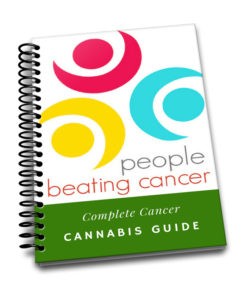C-B-D oil is an anti-angiogenic, multiple myeloma therapy that research has show is both cytotoxic to MM but also synergies with Velcade (bortezomib).
Conventional oncology considers multiple myeloma (MM) to be an incurable blood cancer. After I “failed” all conventional MM therapies, I underwent a non-conventional multiple myeloma therapy. I reached complete remission 17 months later and have been living an evidence-based anti-MM lifestyle ever since.
The article linked and excerpted below has nothing to do with multiple myeloma therapy but everything to do with the Food and Drug Administration aka the F.D.A.. I’m writing a post about the article because:
- Cannabidiol aka C-B-D oil is being discussed like an average F.D.A. approved therapy-
- The more cannabinoids show medical efficacy the more difficult it is for the federal government to outlaw medical marijuana-
- Readers of the New York Times will become more knowledgeable about cannabis-

I am in no way endorsing GW Pharmaceuticals or Epidiolex. I know very little about C-B-D and epilepsy.
I do, however, know that research has established CBD as a pain management therapy and I do know that C-B-D can work synergistically with certain cancer chemotherapy regimens for MM. Most importantly, according to research C-B-D kills multiple myeloma.
I believe that the U.S is missing a huge opportunity by not researching, by not learning more about cannabinoids and their medical applications toward multiple myeloma and pain management.
But in my view, the fact that the F.D.A. is reviewing a cannabinoid-based therapy is progress.
To Learn More about Cannabinoids and C-B-D oil- click now-
Do you have multiple myeloma? If you would like to learn more about C-B-D as a multiple myeloma therapy, scroll down the page, post a question or comment and I will reply to you ASAP.
Thank you,
David Emerson
- MM Survivor
- MM Coach
- Director PeopleBeatingCancer
Recommended Reading:
“A cannabinoid is one of a class of diverse chemical compounds that acts on cannabinoid receptors in cells that alter neurotransmitter release in the brain. Ligands for these receptor proteins include the endocannabinoids (produced naturally in the body by animals),[1] the phytocannabinoids (found in cannabis and some other plants), and synthetic cannabinoids (manufactured artificially). The most notable cannabinoid is the phytocannabinoid tetrahydrocannabinol (THC), the primary psychoactive compound in cannabis.[2][3] Cannabidiol (CBD) is another major constituent of the plant.[4] There are at least 113 different cannabinoids isolated from cannabis, exhibiting varied effects.[5]…”
“A Food and Drug Administration advisory panel on Thursday unanimously recommended approval of an epilepsy medication made with an ingredient found in marijuana. If the agency follows the recommendation, as is expected, the drug would be the first cannabis-derived prescription medicine available in the United States.
The drug, called Epidiolex, is made by GW Pharmaceuticals, a British company. Its active ingredient, cannabidiol, also called CBD, is one of the chemical compounds found in the cannabis plant, but it does not contain the properties that make people high.
That makes it different from the “medical marijuana” allowed by a growing number of states. In those cases, certain patients are legally authorized to smoke or ingest marijuana to treat severe pain, nausea and other ailments…
There are already several drugs on the market that are derived from synthetic versions of THC and other chemicals of the cannabis plant, generally used to ease nausea in cancer patients, and to help AIDS patients avoid weight loss…
“This is a very good development, and it basically underscores that there are medicinal properties to some of the cannabinoids,”…“I think there could well be other cannabinoids that are of therapeutic use, but there is just not enough research on them to say…”
The briefing materials prepared for the committee by F.D.A. staff made it clear that the agency supports the application. The F.D.A. wrote that GW Pharma had submitted positive results of efficacy from three randomized, double-blind, placebo-controlled trials conducted in patients with both diseases.
“The statistically significant and clinically meaningful results from these three studies provide substantial evidence of the effectiveness of CBD for the treatment of seizures associated with LGS and DS,” the agency noted….”
“Multiple myeloma (MM) is a plasma cell (PC) malignancy characterised by the accumulation of a monoclonal PC population in the bone marrow (BM). Cannabidiol (CBD) is a non-psychoactive cannabinoid with antitumoural activities, and the transient receptor potential vanilloid type-2 (TRPV2) channel has been reported as a potential CBD receptor.
TRPV2 activation by CBD decreases proliferation and increases susceptibility to drug-induced cell death in human cancer cells. However, no functional role has been ascribed to CBD and TRPV2 in MM…
These results showed that CBD by itself or in synergy with BORT strongly inhibited growth, arrested cell cycle progression and induced MM cells death by regulating the ERK, AKT and NF-κB pathways with major effects in TRPV2+ cells. These data provide a rationale for using CBD to increase the activity of proteasome inhibitors in MM.”
Cannabis as Multiple Myeloma Therapy-
Cannabinoids have a very selective antitumor effect against MM cells… In vivo studies confirmed the efficacy of these agents in the treatment of MM…”
The fall of 2013 marks the beginning of PeopleBeatingCancer’s research into cannabis (CAN), CBD, cannabinoids as a therapy for multiple myeloma (MM) – for pain, nausea and as a therapy to kill MM itself.

My initial research indicates that
- CAN is a legitimate therapy for pain
- CAN is a legitimate therapy for nausea
- CAN is a legitimite integrative therapy when combined with certain chemotherapy regimens
- CAN may be a legitimate therapy for your cancer depending on your type and stage
Some of the challenges faced by cancer patients currently is to determine if CAN may “work” on their cancer and, if so, what strain of cannabis or what strength, dose and ratio of cannabinoids and THC.
I am a long-term multiple myeloma survivor and MM cancer coach. To learn more about how medical marijuana may help you with your cancer, scroll down the page, post a question or a comment and I will reply to you ASAP.
Ed.Note- update as of 1/18- CAN for medical purposes has been legalized in many U.S. states and Canada though CAN has not been well-studied. At least not enough in my mind due to the desire of MM patients, survivors and caregivers to find therapies that can treat their pain, nausea, etc. and possibly act directly on their cancer.
Recommended Reading:
Some definitions-
Cannabidiol (CBD) is one of at least 85 cannabinoids found in cannabis.[2] It is a major constituent of the plant, second to THC, and represents up to 40% in its extracts.[3] Compared with THC, cannabidiol is less psychoactive, and is considered to have a wider scope of medical applications than THC,[4] including to epilepsy,[5] multiple sclerosis spasms,[6] anxiety disorders, bipolar disorder,[4] schizophrenia,[7] nausea, convulsion and inflammation, as well as inhibiting cancer cell growth.
Cannabigerol (CBG) is a non-psychoactive cannabinoid found in the Cannabis genus of plants. Cannabigerol is found in higher concentrations in hemp rather than in varieties of Cannabis cultivated for high THC content and their corresponding psychoactive properties.
Cannabivarin, also known as cannabivarol or CBV, is a non-psychoactive cannabinoid found in minor amounts in the hemp plant Cannabis sativa
Hemp oil or hempseed oil is obtained by pressing hemp seeds. Cold pressed, unrefined hemp oil is dark to clear light green in color, with a pleasant nutty flavour. The darker the color, the grassier the flavour. Refined hempseed oil is clear and colorless, with little flavor and lacks natural vitamins and antioxidants. Refined hempseed oil is primarily used in body care products. Industrial hempseed oil is used in lubricants, paints, inks, fuel, and plastics-
Medical cannabis refers to the parts of the herb cannabis used as a form of medicine or herbal therapy, or to synthetic forms of specific cannabinoids such as THC (delta-9-tetrahydrocannabinol) as a form of medicine. The Cannabis plant has been used as a medicine over an extensive period of time.[1] Cannabis is one of the 50 “fundamental” herbs of traditional Chinese medicine,[2] and is prescribed for a broad range of indications.
“CONCLUSIONS: Cannabinoids have a very selective antitumor effect against MM cells. This effect involves activation of apoptosis processes and alterations in the composition of membrane sphingolipids (ceramides). In vivo studies confirmed the efficacy of these agents in the treatment of MM…”
“Herein, we also found that the CBD and THC combination is able to reduce expression of the β5i subunit as well as to act in synergy with CFZ to increase MM cell death and inhibits cell migration. In summary, these results proved that this combination exerts strong anti-myeloma activities.”
“Background-Cancer is a major public health problem as the leading cause of death. Palliative treatment aimed to alleviate pain and nausea in patients with advanced disease is a cornerstone of oncology. In 2007, the Israeli Ministry of Health began providing approvals for medical cannabis for the palliation of cancer symptoms. The aim of this study is to characterize the epidemiology of cancer patients receiving medical cannabis treatment and describe the safety and efficacy of this therapy…
Conclusions-CAN as a palliative treatment for cancer patients seems to be well-tolerated, effective and safe option to help patients cope with the malignancy related symptoms.”
“New research has shown that the non-hallucinogenic components of CAN could act as effective anti-cancer agents. The anti-cancer properties of tetrahydrocannabinol (THC), the primary hallucinogenic component of CAN, has been recognised for many years, but research into similar cannabis-derived compounds, known as cannabinoids, has been limited…
Of six cannabinoids studied, each demonstrated anti-cancer properties as effective as those seen in THC. Importantly, they had an increased effect on cancer cells when combined with each other…”Used in combination with existing treatment, we could discover some highly effective strategies for tackling cancer…
The study examined two forms of cannabidiol (CBD), two forms of cannabigerol (CBG) and two forms of cannabigevarin (CBGV). These represent the most common cannabinoids found in the cannabis plant apart from THC.”
“…Consistent with the in vitro data, administration of THC to mice with human tumors decreased tumor growth and induced the tumor cells to undergo autophagy. As analysis of tumors from two patients with recurrent glioblastoma multiforme (a highly aggressive brain tumor) receiving intracranial THC administration showed signs of autophagy, the authors suggest that cannabinoid administration may provide a new approach to targeting human cancers.
Cannabinoid action induces autophagy-mediated cell death through stimulation of ER stress in human glioma cells…





